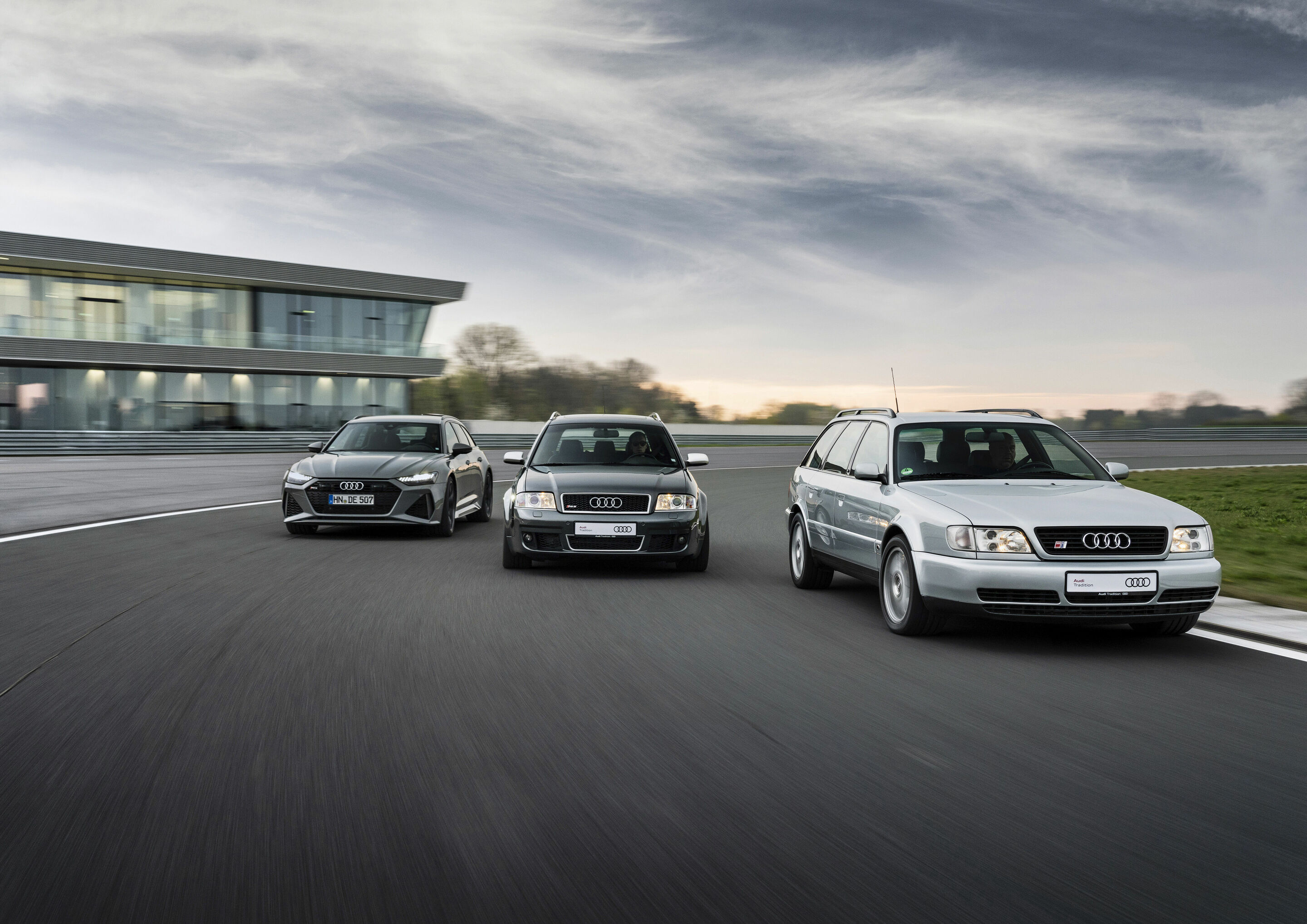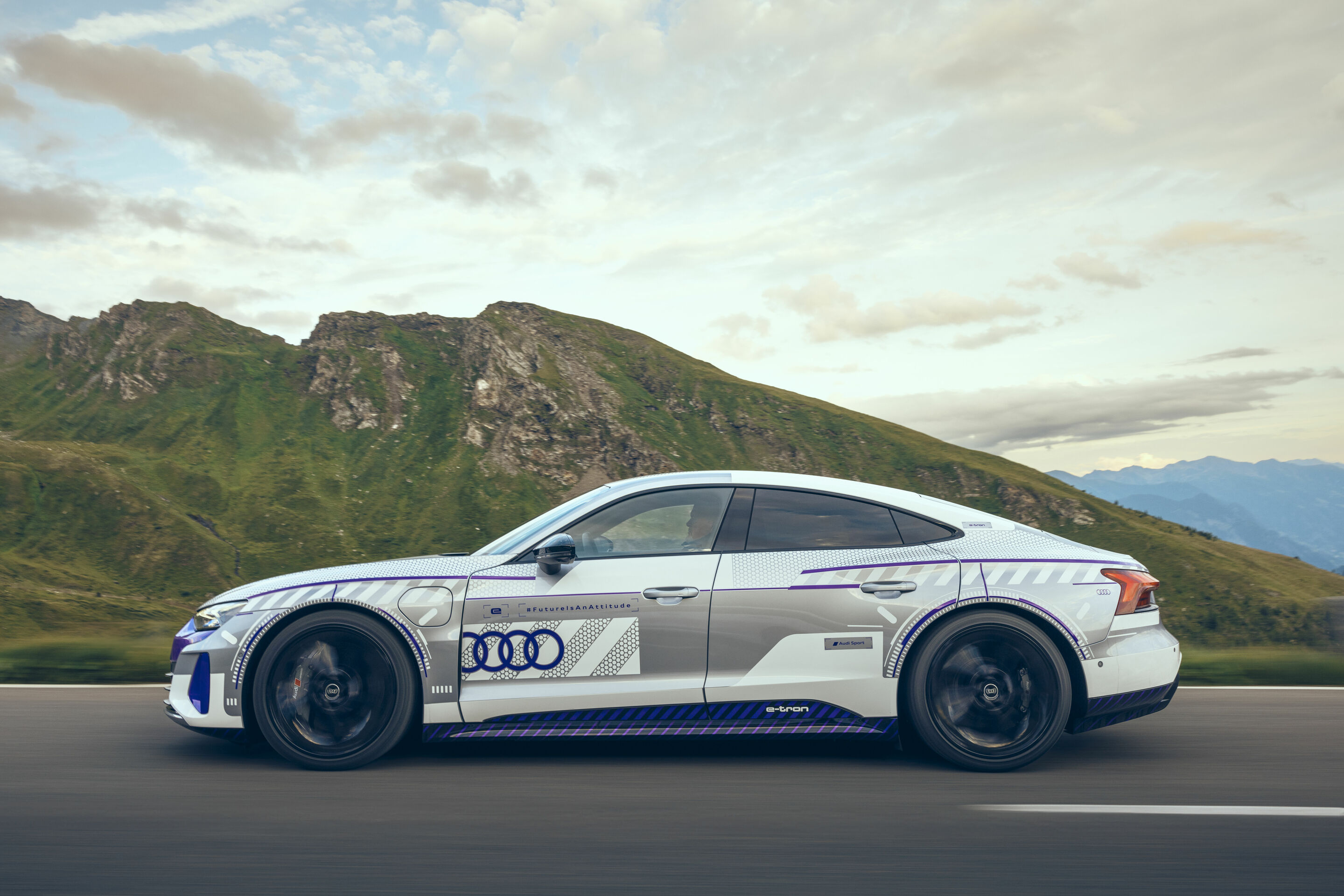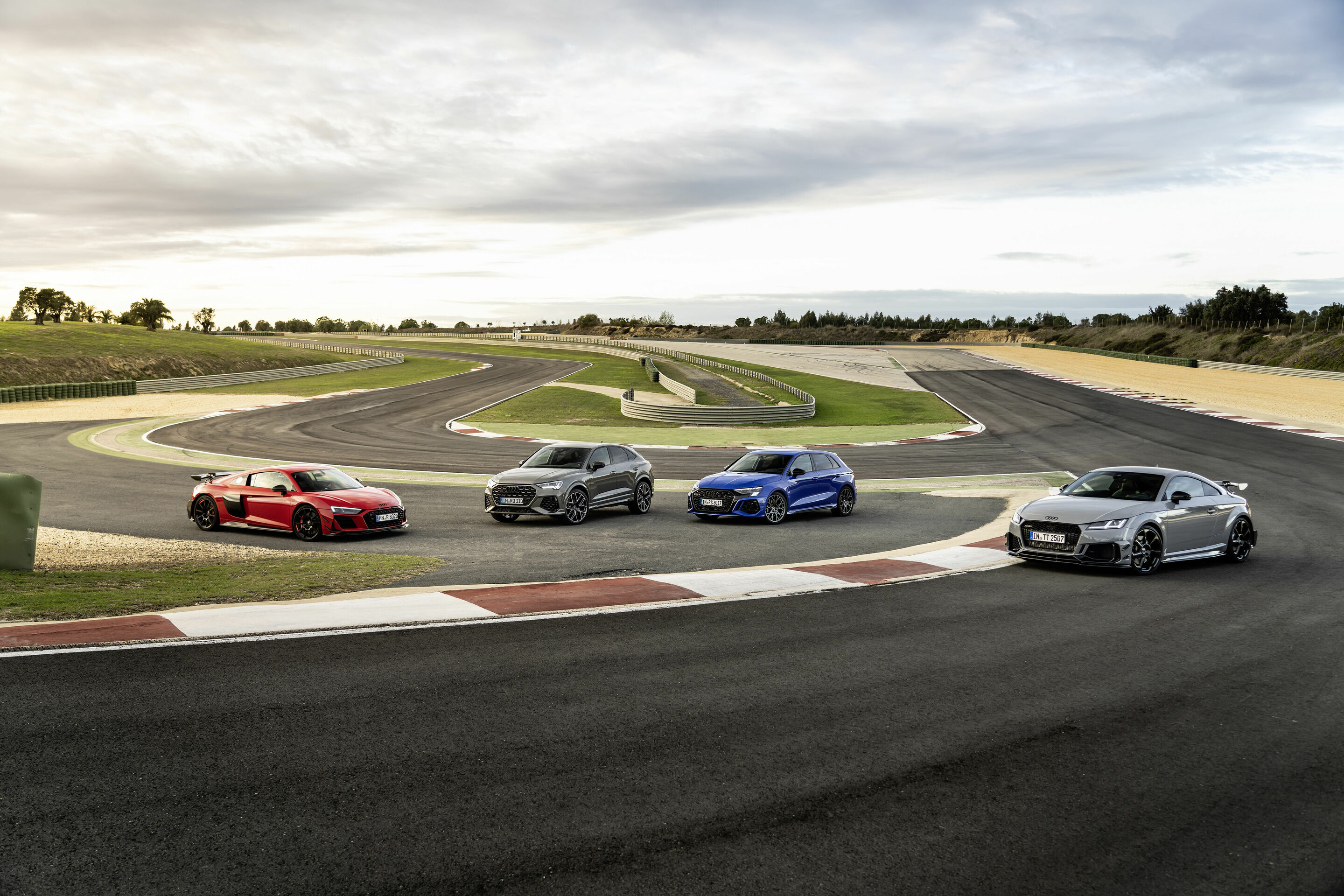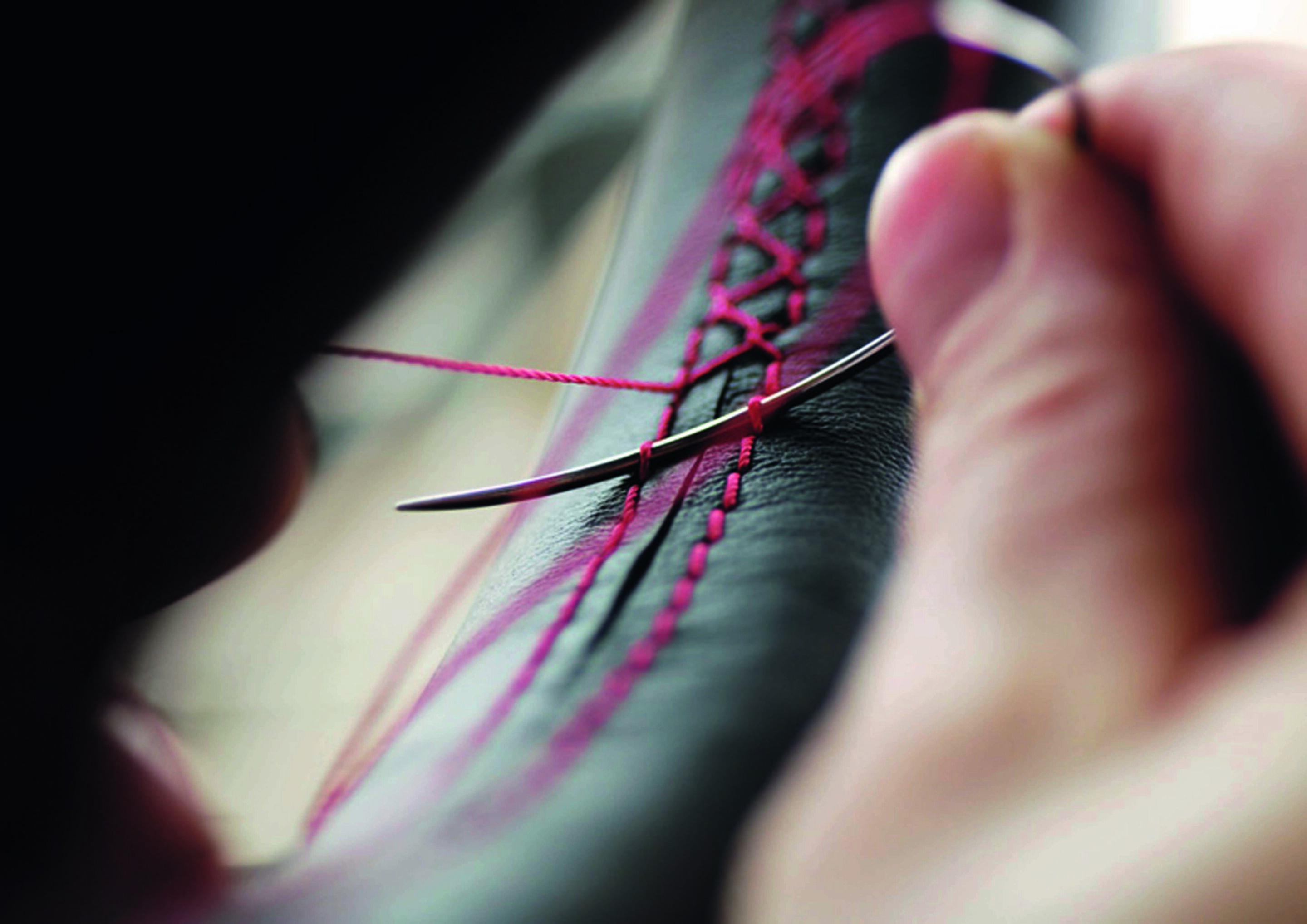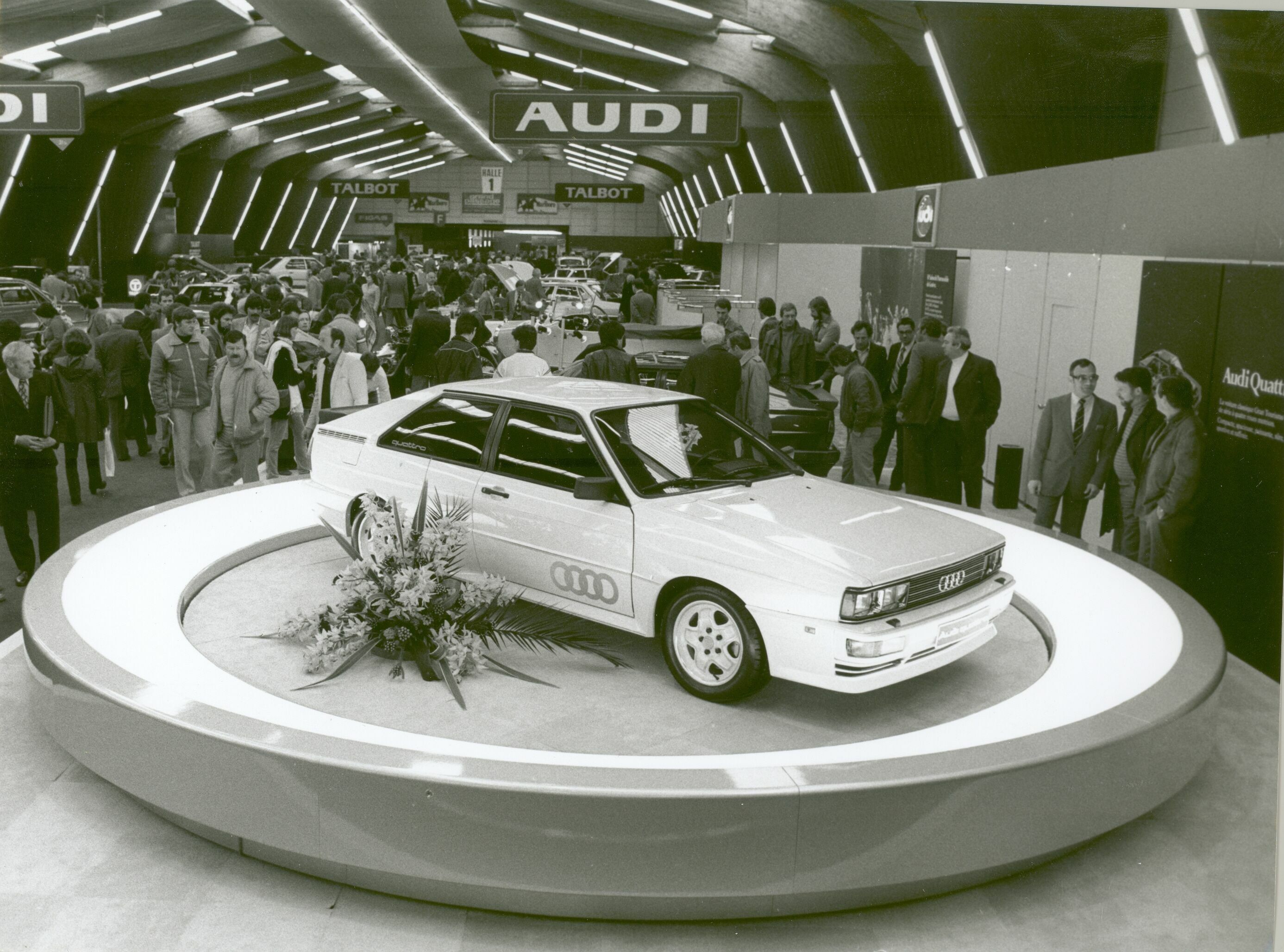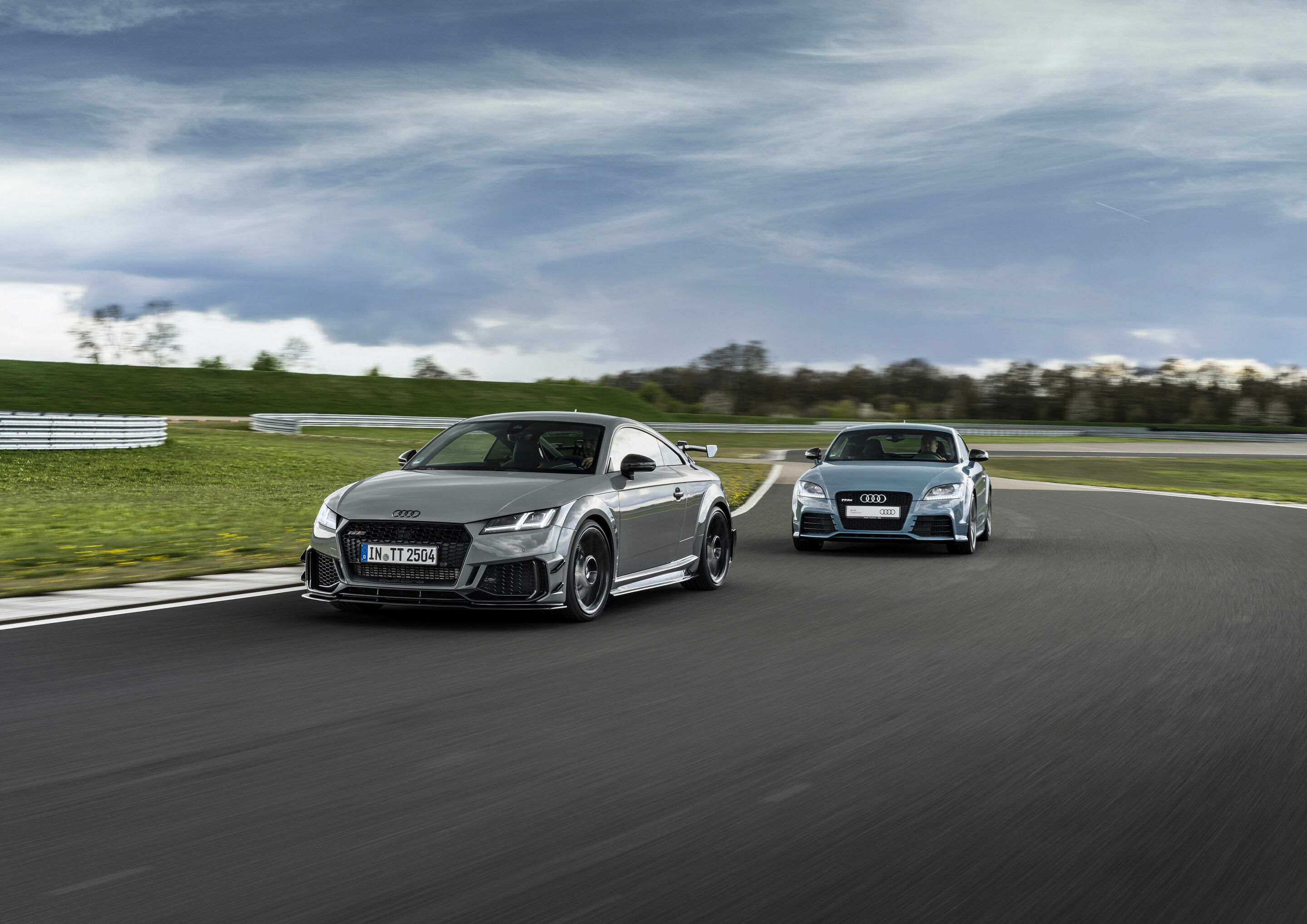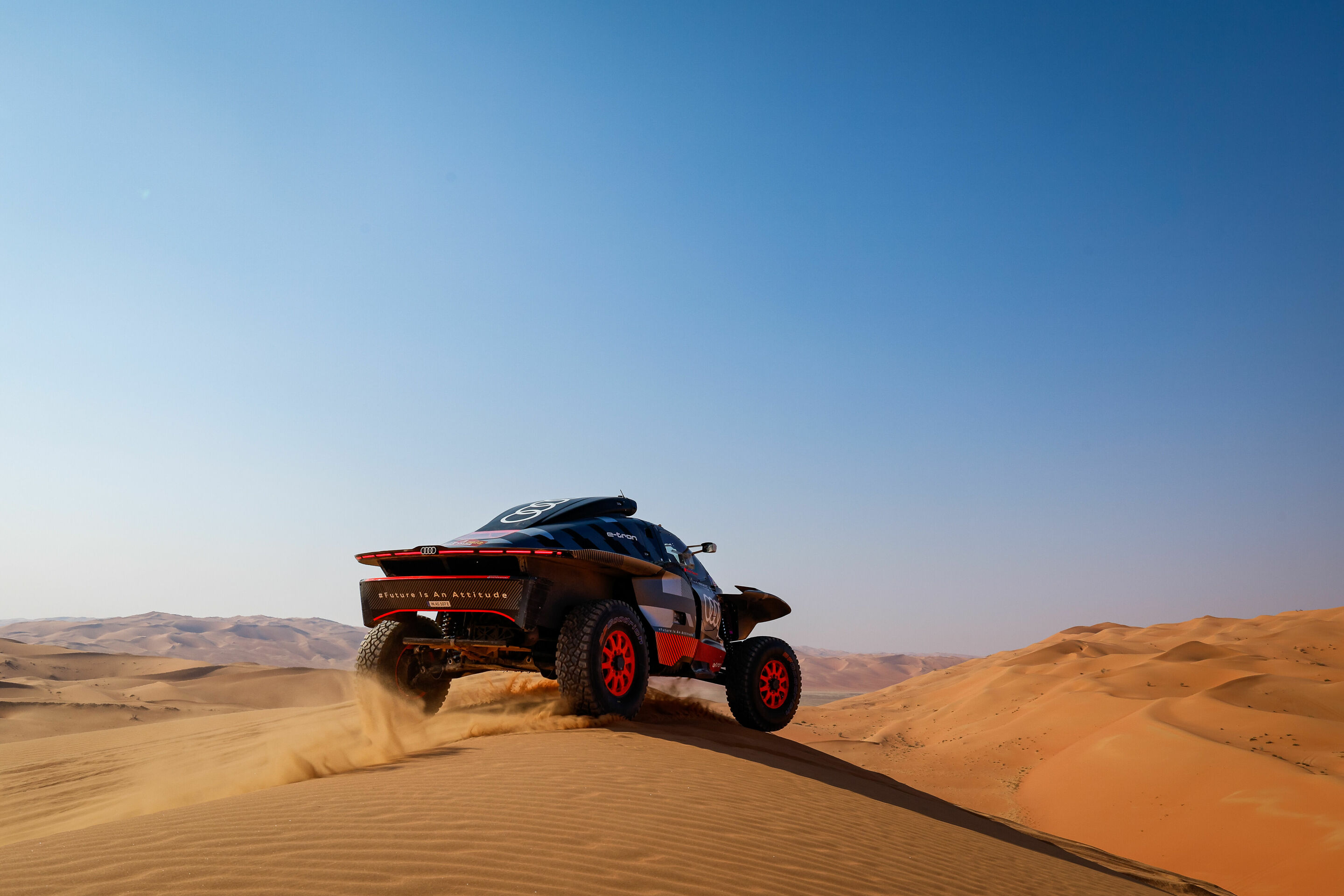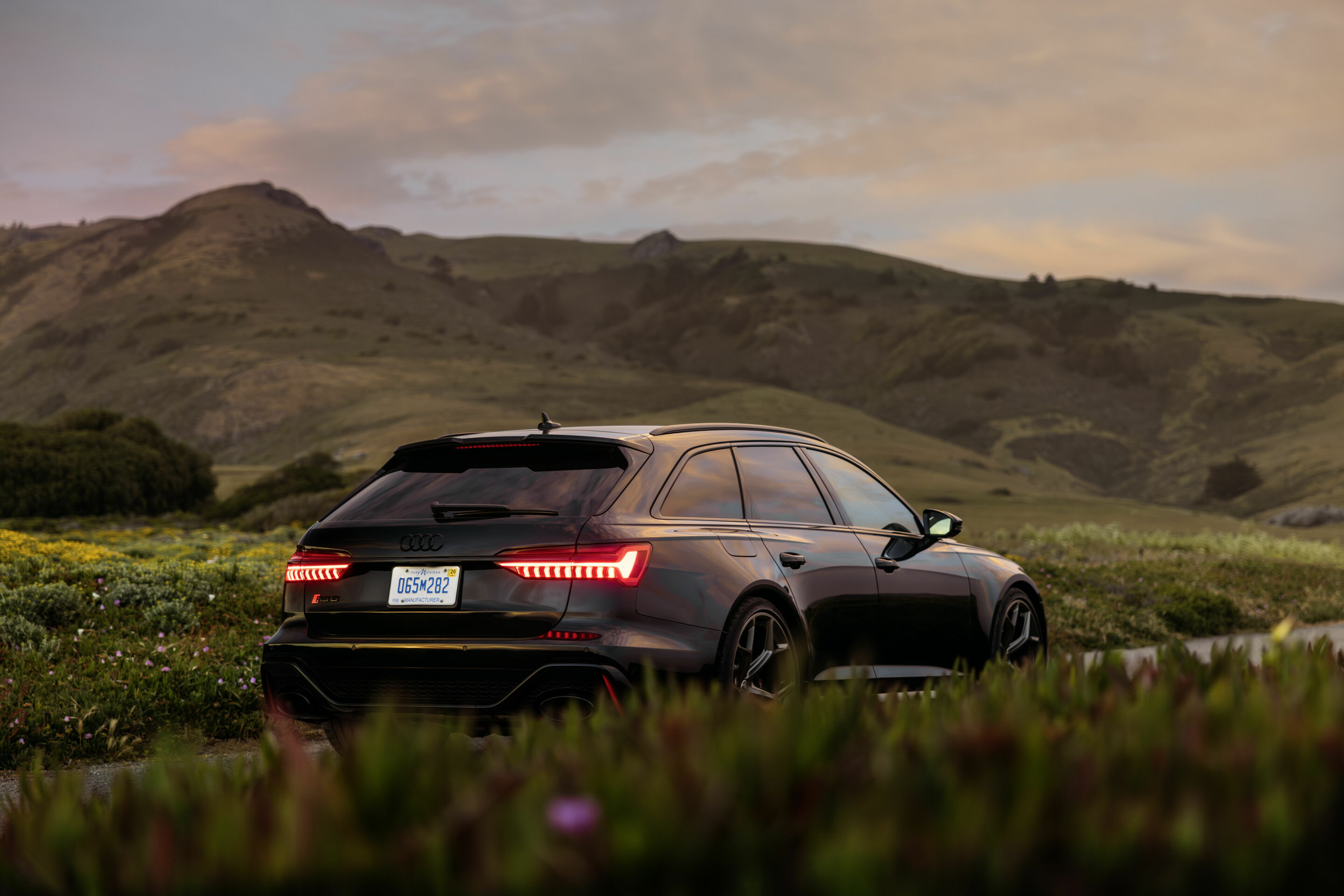40 facts about 40 years of Audi Sport GmbH
Back to overview
To mark the 40th birthday of Audi Sport GmbH, which evolved from quattro GmbH founded in 1983, the company presents 40 exciting facts.
quattro and quattro GmbH: Audi registered the quattro brand in 1979. The term quattro (Italian for “four”) stands for the drivetrain of an automobile that transfers power to all four of its wheels. In March 1980, the brand with the four rings presented the quattro sports coupé, its first model with permanent all-wheel drive. This cutting-edge technology, which offers a particularly high level of dynamic handling, safety, and unique driving pleasure, is still the basic feature of all Audi RS models today. In 1983, Audi founded quattro GmbH as a wholly owned subsidiary. The original goals were to protect the quattro name and marketing rights internationally in a legal manner, and to supplement the Audi portfolio in a targeted way with sophisticated product and service ranges bearing the quattro logo.
The original: Audi systematically extended the offering of vehicles with permanent all-wheel drive to all of its model ranges in the 1980s. To identify the forefather of all the brand’s all-wheel drive models, the first Audi quattro was later given the name “Ur-quattro” in German. With 147 kW (200 hp), the sports coupé was in the sports car league at the time.
Thick cheeks: The characteristic fender flares – known as blisters – marked the first Audi quattro. This feature is at the core of Audi’s design DNA. “Making technology visible” is the name of this central design philosophy of the brand with the four rings. Audi also emphasizes the strong quattro character with this striking design feature on many of the current RS models.
October 10, 1983: On this day, Audi founded quattro GmbH, which was renamed as Audi Sport GmbH in 2016. The name quattro GmbH unmistakably stands for the special note of individuality, sportiness, and exclusivity that Audi’s new corporate subsidiary delivers. Its first managing director was Jens Neumann.
The development of the rhombus: The defining red rhombus of the Audi Sport brand dates back to 1981. It was first registered with the German Patent and Trademark Office on January 23, 1981, one day before the start of the Monte Carlo Rally, where the Audi quattro made its debut in rallying. Effective as of March 16, 1981, the Office protected the rhombus, which initially included three colors, as a word and figurative mark. The colors red, gray, and mahogany brown marked the triple-striped rhombus, as did the livery designs of the rally cars and later the Audi Sport race cars in Trans Am, IMSA GTO, and DTM. In 1990, the sportiest production model, the Audi S2, wore a solid red rhombus with the four rings set into it as its emblem for the first time. For the 1992 DTM season, Audi also visually transformed its racing logo accordingly. Since the 2004 season, the brand has used the red diamond with the name Audi Sport instead of the four rings.
Much more than cars: In 1984, quattro GmbH offered its first high-quality collection of travel accessories. In the next step, this was expanded to include exclusive watches and a range for ladies called “Lady quattro”. To this day, the design and sale of accessories is one of the company’s four mainstays. In 1995, a second field was added with an individual program, now known as “Audi exclusive”. Customers have a wide choice of equipment and finishing options. The third pillar came into being in 1996 with the registration as an independent car manufacturer. A fourth field of business was opened in 2011 with motorsport from Audi Sport customer racing.
The first of its own cars: quattro GmbH was registered as an autonomous vehicle manufacturer in 1996. In the same year, the sporty Audi subsidiary presented its first high-performance model: the Audi S6 plus with 240 kW (326 hp). This was followed in 1999 by the first RS model to be developed entirely independently based on a vehicle from large-scale production: the Audi RS 4 Avant from the B5 range. With its 280 kW (380 hp) 2.7-liter biturbo V6 engine, this model set standards and became the trendsetter in the high-performance station wagon market segment that was newly established by Audi.
January 4, 1999: quattro GmbH moves its official headquarters from Ingolstadt to Neckarsulm. Automobiles have been produced at Audi’s Neckarsulm facility for over 100 years now. Today, 15,505 Audi employees work there for the mobility of the future. In the neighboring Böllinger Höfe industrial park, AUDI AG has expanded the Neckarsulm plant by an area that now covers around 300,000 square meters. This is where Audi Sport GmbH is based and where the Audi R8 high-performance sports car and the all-electric Audi e-tron GT are built.
In 2005, the opening of Audi Forum Neckarsulm. The exhibition and visitor center offers 10,000 square meters of experiential tours of Audi’s modern automobile production and a colorful program of cultural events. An Audi exclusive studio also went into operation for the first time with its establishment, where Audi customers can obtain personal and particularly comprehensive advice on refining and individualizing their model. On October 14, 2023, an event celebrating the 40th anniversary of Audi Sport GmbH will be held for customers and fans in and around Audi Forum Neckarsulm.
Manufacturing meets smart factory: The Böllinger Höfe production facility opened in 2014, part of the Neckarsulm plant, has a production area of around 40,000 square meters. With the Audi R8 high-performance sports car and the fully electric e-tron GT and RS e-tron GT models, completely different vehicle concepts are created in one plant. To integrate the electrically powered models into the production process, assembly was expanded by 20 to 36 work cycles. New competencies in the areas of electrification, automation, and digitalization were also added. The strengths and experience of the manufacturing plant were retained. The result was a unique interplay of new technology and craftsmanship for the smart factory and manufactory operation.
Five-cylinder success story: After Audi had already built five-cylinder engines from 1976 to 1997, Audi Sport GmbH revived the concept in 2009 in the Audi TT RS. Unlike its predecessors in the larger Audi models, the second-generation 250 kW (340 hp) power unit is not installed longitudinally but positioned transversely in the front of the compact coupe. A jury named the five-cylinder turbocharged engine as the “International Engine of the Year” nine times in succession. The successful unit is also used in the various generations of the RS 3 and RS Q3.
Premium package: Audi exclusive developed high-quality ideas for the interior at an early stage. The first generation of the Audi A8 was equipped with a cool box, a bar compartment, a VHS player with a monitor, a folding table, and electrically operated curtains. Later developments featured headrests with monitors, a seat center section with a DVD player, and a control console. Audi was a pioneer in the industry when it came to landline telephones and fax machines inside cars. In 2022, Audi exclusive implemented ten limited special editions and individualized every fourth Audi R8.
Audi RS 6 Avant: In 2002, the Audi RS 6 made its debut as a sedan and Avant with a V8 biturbo engine putting out 450 hp. By way of comparison, the ABT team’s DTM Audi, with which Laurent Aïello won the title in 2002, also produced 450 hp at this time. The combination of enormous power and outstanding everyday practicality have always been the key features of the RS 6. The Avant version in particular has been synonymous with sustained sales success and an international fan base for more than 20 years. The second RS 6 generation from 2008 featured a V10 biturbo engine with 426 kW (580 hp). From 2013, the third generation was equipped with a 412 kW (560 hp) V8 biturbo, and its longitudinal and lateral driving dynamics were further optimized when compared to its predecessor. Audi has been supplying the fourth-generation RS 6 Avant since 2019. Its four-liter V8 biturbo engine produces 441 kW (600 hp). Unlike its three predecessors, the fourth generation does not wear ordinary attire but is recognizable as a powerful station wagon at first glance. This RS model only shares the front doors, roof, and tailgate with the A6 Avant base car. The fourth edition of the Audi RS 6 is the first to also be offered as an Avant in the USA.
Audi R8 icon: The Audi R8 with its mid-engine concept, presented in 2006, is Audi’s first high-performance sports car. At the same time, it is the first completely in-house development by quattro GmbH from the ground up. Since 2015, the second generation of the R8 has been on offer as a Coupé or Spyder with various drivetrain options and in different editions. Its naturally aspirated high-revving V10 with 5.2 liters of displacement inspires an exclusive clientele in various power levels with up to 456 kW (620 hp). Audi has made the hearts of many enthusiasts beat faster with editions such as the Decennium models celebrating ten years of the V10 engine, the rear-wheel-drive RWS, and the R8 GT. For racing, the Audi Sport customer racing division supplies the R8 LMS specified for the GT2, GT3, and GT4 categories.
Audi TT RS: The Audi TT RS made its debut in 2009 as a coupe and roadster. Its 2.5-liter five-cylinder engine thrilled with emotional sound and 250 kW (340 hp) of power in the second generation. The third generation followed in 2016. All RS ranges of the compact sports car are united by the timeless design, which is reduced to the essentials without frills and focused on the driver. The combination of the purist design language and pure driving pleasure made the sporty Audi TT RS an automotive icon, just like the basic TT model before it.
Nordschleife circuit: With its legendary Nordschleife, the Nürburgring is a fixture in the cosmos of vehicle development and testing at Audi Sport GmbH. As part of endurance testing, every new RS model is tested there for a good 8,000km on the asphalt of the over 20km-long undulating track of the “Green Hell” – this easily corresponds to the real-life stresses of an entire car’s life cycle on the road. Frank Stippler, a professional Audi Sport race driver and vehicle engineer, has long been significantly involved in the testing of the R and RS models in the Eifel.
Fast intervention fleet: The R and RS ranges from Audi Sport GmbH have also been performing useful services on the race track for more than 20 years. Whether as medical and intervention cars, as service vehicles for race management, or as safety cars: Since the Nürburgring 24 Hours in 2002, the fastest models have been in action at the events of various racing series. Over the years, these events have included those of the Fanatec GT World Challenge series of promoter SRO, championships of the ADAC, the Le Mans 24 Hours, the FIA WEC, and also the DTM for a long time.
Power distribution: From 1980 to 1986, Audi model series equipped with quattro had a center differential that could only be locked manually for speed compensation and power distribution between the front and rear axles. The first self-locking center differential of the Torsen type was used in the Audi 80 quattro in 1986. In 1999, quattro technology with an electro-hydraulically controlled multi-plate clutch was introduced in the compact segment with transversely mounted engines. The next major step was taken in 2005 with the center differential that had an asymmetrical dynamic distribution of 40 to 60 between the front and rear axles. With the appearance of the first Audi R8, a viscous coupling debuted on the front axle in 2007, followed a year later by the sport differential on the rear axle. In 2016, the efficiency-optimized quattro system with ultra technology was added to the portfolio. And in 2019, Audi launched electric all-wheel drive in the e-tron.
DTM record holder: The Class 1 version of the Audi RS 5 Coupé fielded in the 2019 and 2020 DTM seasons is one of the most successful cars in touring car racing series. During these two years, Audi won a total of 28 out of 36 races, clinched 95 out of a possible 108 podium results, 29 pole positions, 28 fastest race laps, as well as all six championship titles in the drivers’, manufacturers’, and teams’ classifications. On all eleven tracks of the 2019 and 2020 DTM race calendars, the Audi RS 5 DTM holds the absolute track record for Class 1 race cars. In 2020, the Audi RS 5 DTM led a total of 601 of 649 laps during the season, i.e. 93 percent of the total distance completed, and set a 25-year-old DTM record with 16 season victories. The 449 kW (610 hp) four-cylinder turbo was the most powerful and efficient engine in the DTM history of the four rings. Audi Sport designed the compact power unit based on the combination of exhaust gas turbocharging and gasoline direct injection (TFSI), which is also widely used in the brand’s production cars.
Most powerful RS models: These are currently the RS 6 Avant performance and the Audi RS 7 Sportback performance. The “performance” strategy, first implemented by Audi in the previous A6 C7 model range, primarily stands for more power. The 4.0-liter V8 biturbo TFSI engine used in the RS 6 Avant performance and RS 7 Sportback performance produces 463 kW (630 hp). This represents an increase of 22 kW (30 hp) when compared to the respective base version.
Youth research: As part of an idea collection competition during training at Audi Neckarsulm, twelve apprentices built the Audi RS 6 GTO concept. The design was created by Marc Lichte and his team. It embodies the characteristics of the Audi 90 quattro IMSA GTO from motorsport and also makes the quattro representation visible with its wide fenders.
Open and glorious: The 2006 Audi RS 4 with a folding soft top was the first cabriolet with the RS emblem. As many as three variants of this second RS 4 generation appeared: the Sedan, Avant, and Cabriolet. Common to all three body versions was a high-revving V8 engine featuring a displacement of 4.2 liters and an output of 309 kW (420 hp).
Extreme technology: Brake discs made of ceramic silicon carbide, reinforced with embedded carbon fibers, are more heat-resistant than steel. This is why “ceramic brakes” prevent losses of braking power due to overheating. In the current Audi RS Q3 and Audi RS Q3 Sportback, Audi uses ceramic brake discs with a diameter of 380 millimeters in combination with a newly developed monoblock aluminum caliper.
RS for the compact class: In 2011, Audi also realized the high-performance idea in the compact class with the Audi RS 3 Sportback. Its turbocharged 2.5-liter five-cylinder engine produces 250 kW (340 hp). The RS 3 Sportback is currently in its third generation, the RS 3 Sedan in its second. With the Audi RS 3 LMS, Audi has also developed a popular touring car, for motorsport purposes, that is based on the saloon that has clinched 30 drivers’ titles in TCR categories worldwide to date.
Steering wheel with shift paddles: Audi Sport GmbH adopted this motorsport technology, from the Audi R8 sports prototype that won Le Mans for the first time in 2000, for the customer racing and road versions of the R8 high-performance sports car of the same name and RS models, among others. Pulling one shift paddle sequentially shifts the transmission into a higher gear, while pulling the other activates the downshifts. In the Audi e-tron GT and RS e-tron GT, the braking force generated via recuperation can be adjusted in three stages via the paddle shifters on the steering wheel.
Dynamic Ride Control (DRC): This innovative suspension technology, which is optionally available for various RS models, hydraulically controls and steers the movements of the body around its longitudinal and transverse axes without the use of electronics. This significantly reduces body roll (lateral tilt) and pitch (dip of the front or rear), especially when cornering, and thus optimizes handling. Audi’s Dynamic Ride Control consists of steel springs and three-stage adjustable shock absorbers. The diagonally opposed dampers (front right/rear left and front left/rear right) are connected via oil lines.
Fast customer service: Since 2009, sports enthusiasts have had the opportunity to race with specially developed models from Audi. The program is called Audi Sport customer racing. What began with the first generation of the Audi R8 LMS GT3 sports car is now a model range of four race cars, starting with the Audi RS 3 LMS TCR touring car and continues with the GT2, GT3, and GT4 variants of the Audi R8 LMS. More than 400 title successes around the globe, 17 victories in 24-hour races, and hundreds of race cars sold stand for 15 years of success. In the future, customers will still be able to use the race cars on their own and rely on the brand’s parts service.
Futuristic into the desert: Audi’s factory motorsport is also part of Audi Sport GmbH’s responsibility. For the Dakar Rally as its current program, the company has developed the futuristic Audi RS Q e-tron. The prototype with an electric drivetrain, energy converter, and high-voltage battery is competing to prove its efficiency and competitiveness in the low-emission T1U class.
Loyal audience: Audi Sport GmbH and its high-performance vehicles inspire enthusiasm worldwide. There are a large number of RS clubs in German-speaking countries alone. A number of them will be on hand at the company’s 40th anniversary event in Neckarsulm.
Four locations: The high-performance models of Audi Sport GmbH roll off the production lines at four locations. In Germany, these are the Neckarsulm plant including the associated Böllinger Höfe in neighboring Heilbronn and Ingolstadt. There is also production in Győr (Hungary) and Bratislava (Slovakia).
CO2-neutral balance sheet: Audi Sport GmbH obtains green electricity and uses heat from renewable sources in the production of the R8 and e-tron-GT models at Böllinger Höfe in Neckarsulm, Audi’s first CO2-neutral production plant in Germany. Audi offsets CO2 emissions that cannot yet be avoided using renewable energy sources with carbon credits from certified climate conservation projects.
Electric future: The Audi RS e-tron GT is the first fully electric RS model. The performance of its electric all-wheel drive, but also chassis, light, operation, connectivity as well as the e-tron Sportsound demonstrate the brand’s concentrated technological expertise and passion. In line with Audi’s consistent electrification strategy, the next all-electric RS models will also follow on the PPE platform. In total, Audi Sport GmbH plans to introduce around ten, in some cases completely new, fully and partially electric Audi Sport models by 2026. By the end of the decade, the portfolio of the sporty Audi subsidiary is to consist of one hundred percent battery electric (BEV) and partially electric (PHEV) models.
Inspired by the world of snow: Audi Sport GmbH is presenting the Audi RS e-tron GT ice race edition to mark its 40th birthday. The special model, limited to 99 units, impresses with its fascinating exterior and matching interior.
High performance in all classes: Audi Sport GmbH has systematically expanded its model portfolio. It is now comprised of 16 models, more than ever before – models with 2+2 coupe, roadster, sedan, Avant, Sportback, and SUV coupe layouts. In 2019, Audi Sport GmbH launched its largest RS model offensive to date within a single year, offering the largest product portfolio ever. The sporty subsidiary of AUDI AG added seven new versions to its range, which included twelve models at the time: the TT RS as a coupe and roadster, the RS 6 Avant, the RS 7 Sportback, the RS Q3 and RS Q3 Sportback, and the RS Q8. These were joined by three comprehensive updates: for the RS 4 Avant, the RS 5 Coupé, and the RS 5 Sportback. The basis for this offensive is the new model strategy developed by Audi Sport GmbH since 2014: The RS vehicles it designs and develops are now released on the market a relatively short time after the launch of the respective base models from large-scale production and no longer in the final third of their production runs.
Focus on customers: In close cooperation with AUDI AG, Audi Sport GmbH continuously identifies the wishes and needs of its customers worldwide to be able to offer them a wide-ranging portfolio of high-performance models – in line with the brand’s base models. The aim is to create individual and exclusive vehicles that fit seamlessly into the everyday lives of their users and create lasting emotional and comfortable mobility experiences for them.
Close relatives: The three racing versions of the Audi R8 LMS for the GT2, GT3, and GT4 categories are based directly on the production model. Their basic structure is created at the Böllinger Höfe facility before they are completed for racing at the Biberach plant. At around 60 percent, the proportion of identical parts is the highest between the GT4 variant and the base production model.
Highlights in the Eifel: Audi Sport customer racing’s outstanding motorsport successes include six overall victories at the Nürburgring 24 Hours. Audi was thus the most successful brand in the endurance classic during the decade between 2012 and 2022, and held the distance record there from 2014 to 2022. Time and again, the brand underlined its expertise with “used cars” of the R8 LMS: The race-winning car in 2022 completed a total of 15 race and test appearances and has the impressive figure of 35,774 kilometers of competition, the last 4,035 kilometers of which were on its way to victory.
Enjoying a cabriolet, just like the grownups: For the Audi customers of tomorrow, quattro GmbH designed a small version of the then-new Audi cabriolet that was capable of speeds of up to 25 km/h. It used a single-cylinder four-stroke engine and two shiftable forward gears, as well as a reverse gear.
Automobile art work: The emotional design language of the e-tron GT family with the sporty RS version as the top model is the starting point for the design of upcoming electric models from Audi. The four-door Gran Turismo was designed as a dynamic synthesis of the arts. Every surface and every line is coherent in itself – from the three-dimensionally shaped front headlights to the flat silhouette and the striking diffuser at the rear. Together, the details create a fascinating sculpture with ideal proportions.
Top equipment for people and cars: The brand also features in the fast lane of fashion thanks to the Audi collection from Audi Sport GmbH. Its current Casual, Business, Active, and Audi Sport collections offer the right outfit with progressive design and high-quality workmanship for every type of person. Also available are unique lifestyle products such as eyewear, watches, wallets, bags, and luggage. With accessories like these, the Audi subsidiary was already delighting extra sporty fans of the four rings under its name quattro GmbH some 40 years ago. The Audi exclusive offerings open up countless possibilities for refining the driving of an Audi from something special to something very personal – from the individually selectable paint finish to the decorative stitching.
